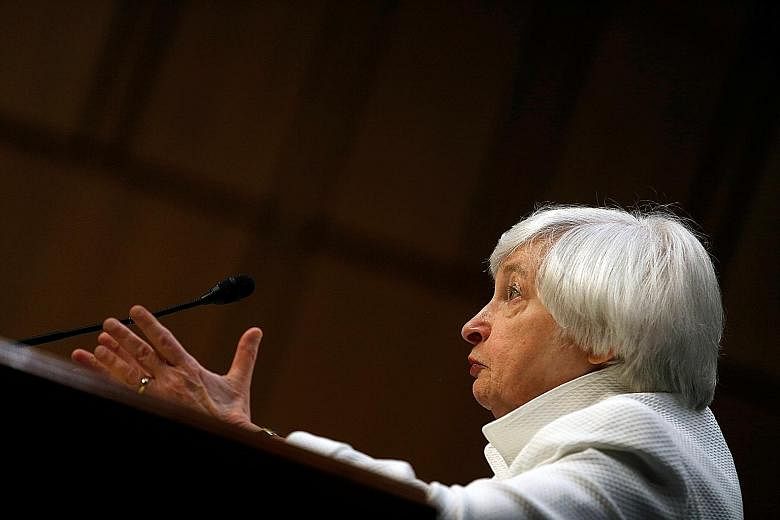WASHINGTON • For Federal Reserve officials, getting better never seems to rise to good enough.
Since the policy-setting Federal Open Market Committee (FOMC) last met six weeks ago, economic reports have shown one example of resilience after another in the US, following a slow first quarter.
When the monetary policy panel starts its two-day meeting today, most investors expect it to do what it has done at every meeting this year: nothing. Indicators such as the June job report, retail sales, housing starts and a gauge of service industries have all beat economists' expectations.
Still, 2016 has defined Fed chairman Janet Yellen's approach to policy, which might be summed up as a doctrine of waiting for overwhelming evidence.
The strategy is aimed at nursing the economy through the uncertainties of various global shocks while puzzling over head-scratchers that include low productivity and how much support is Fed policy really providing to growth.
At the same time, it can seem a highly discretionary, less systematic approach that puts a lot of weight on possible risks that are hard to define or just fade away.
"Upside surprises affect the committee less than downside surprises," says former Fed governor Laurence Meyer, who now runs a Washington policy analysis firm that bears his name. "There is not a chance that they are going to go at this meeting."
Investors see only an 8 per cent probability of a move being announced when the FOMC releases its policy statement on Wednesday, according to pricing in federal funds futures contracts.
There are a host of reasons why Fed officials may feel justified in skipping a rate hike for the fifth straight meeting. The Brexit vote was June 23, so US data for last month may not capture the full impact on corporate or consumer sentiment of the United Kingdom's decision to quit the European Union.
US stocks have recovered their losses since the referendum and advanced last Friday to another record high. But it will still take months, if not years, to understand the full impact of the departure.
Measures of inflation remain low. The Fed's preferred inflation benchmark, minus food and energy, rose 1.62 per cent for the year ending May. The target is 2 per cent for the full index, which is rising at less than half the desired pace due to weak oil prices.
The committee has only had one job report to study since its June 14-15 meeting. True, that reading was strong and suggests the deceleration in hiring from March to May could prove temporary.
But with July's payroll report due on Aug 5, waiting for more evidence could prove an appealing option.
Finally, the risks of moving too quickly are asymmetric, as Fed officials noted in the June meeting minutes. The committee wants to be confident that when it raises interest rates again the United States economy and inflation will not falter, forcing it to backtrack.
However, for the first time since the Fed hiked rates in December, the chance of a growth acceleration is looking as real as the downside risks that "several" FOMC participants fretted over in June.
One reason: an unexpected ease in US financial conditions after the Brexit vote is providing the economy with a supporting tailwind.
"The downside risks have retreated, second-quarter data has been better, and financial conditions have eased," said senior US economist Laura Rosner at BNP Paribas in New York. "These conditions will prompt them to start talking about rate hikes."
So investors will pay close scrutiny to any changes in the language of the statement's first paragraph, which describes the state of the US economy since the last meeting, for hints of a shift.
BLOOMBERG

